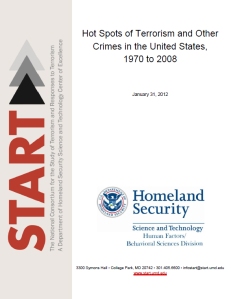US Military to conduct “Walking Dead” Zombie Apocalypse psy-op
October 30, 2012 Leave a comment
What is the intelligence community working on?
By JULIE WATSON | AP | OCTOBER 30, 2012
Move over vampires, goblins and haunted houses, this kind of Halloween terror aims to shake up even the toughest warriors: An untold number of so-called zombies are coming to a counterterrorism summit attended by hundreds of Marines, Navy special ops, soldiers, police, firefighters and others to prepare them for their worst nightmares.
“This is a very real exercise, this is not some type of big costume party,” said Brad Barker, president of Halo Corp, a security firm hosting the Oct. 31 training demonstration during the summit at a 44-acre Paradise Point Resort island on a San Diego bay. “Everything that will be simulated at this event has already happened, it just hasn’t happened all at once on the same night. But the training is very real, it just happens to be the bad guys we’re having a little fun with.”
Hundreds of military, law enforcement and medical personnel will observe the Hollywood-style production of a zombie attack as part of their emergency response training.
In the scenario, a VIP and his personal detail are trapped in a village, surrounded by zombies when a bomb explodes. The VIP is wounded and his team must move through the town while dodging bullets and shooting back at the invading zombies. At one point, some members of the team are bit by zombies and must be taken to a field medical facility for decontamination and treatment.
“No one knows what the zombies will do in our scenario, but quite frankly no one knows what a terrorist will do,” Barker said. “If a law enforcement officer sees a zombie and says, `Freeze, get your hands in the air!’ What’s the zombie going to do? He’s going to moan at you. If someone on PCP or some other psychotic drug is told that, the truth is he’s not going to react to you.”
The keynote speaker beforehand will be a retired top spook former CIA Director Michael Hayden.
“No doubt when a zombie apocalypse occurs, it’s going to be a federal incident, so we’re making it happen,” Barker said. Since word got out about the exercise, they’ve had calls from “every whack job in the world” about whether the U.S. government is really preparing for a zombie event.
Called “Zombie Apocalypse,” the exercise follows the federal Centers for Disease Control and Prevention’s campaign launched last year that urged Americans to get ready for a zombie apocalypse, as part of a catchy, public health message about the importance of emergency preparedness.
The Homeland Security Department jumped on board last month, telling citizens if they’re prepared for a zombie attack, they’ll be ready for real-life disasters like a hurricane, pandemic, earthquake or terrorist attack. A few suggestions were similar to a few of the 33 rules for dealing with zombies popularized in the 2009 movie “Zombieland,” which included “always carry a change of underwear” and “when in doubt, know your way out.”
San Diego-based Halo Corp. founded by former military special ops and intelligence personnel has been hosting the annual counterterrorism summit since 2006.
The five-day Halo counterterrorism summit is an approved training event by the Homeland Security Grant Program and the Urban Areas Security Initiative, which provide funds to pay for the coursework on everything from the battleground tactics to combat wounds to cybersecurity. The summit has a $1,000 registration fee and runs Oct. 29-Nov 2.
Conferences attended by government officials have come under heightened scrutiny following an inspector general’s report on waste and abuse at a lavish 2010 Las Vegas conference that led to the resignation of General Services Administrator Martha Johnson. The Las Vegas conference featured a clown, a mind-reader and a rap video by an employee who made fun of the spending.
Joe Newman, spokesman of the watchdog organization Project on Government Oversight, said he does not see the zombie exercise as frivolous.
“We obviously are concerned about any expenditure that might seem frivolous or a waste of money but if they tie things together, there is a lesson there,” Newman said. “Obviously we’re not expecting a zombie apocalypse in the near future, but the effects of what might happen in a zombie apocalypse are probably similar to the type of things that happen in natural disasters and manmade disasters. They’re just having fun with it. We don’t have any problems with it as a teaching point.”
Defense analyst Loren Thompson agreed.
“The defining characteristics of zombies are that they’re unpredictable and resilient. That may be a good way to prepare for what the Pentagon calls asymmetric warfare,” Thompson said.
Organizers can also avoid the pitfalls of using a mock enemy who could be identified by nationality, race or culture _ something that could potentially be seen as offensive.
“I can think of a couple of countries where the local leaders are somewhat zombie-like,” he joked. “But nobody is going to take this personally.”



